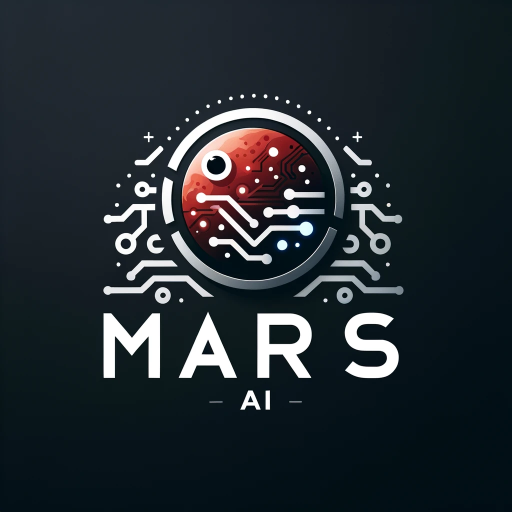Academic translation gpt-academic English to Chinese translation.
AI-Powered Academic English to Chinese Translation.
Translate academic papers in the field of Artificial Intelligence into layman's Chinese, including literal and improved translations
Please input your content
Related Tools

Academic Translator (to English)
I specialize in translations. If a request fails, try 'Translate: [input texts]'.

Translate Chinese to Academic English 科研论文中翻英
Send Chinese text directly to start translating it into academic English.

Academic Assistant
Expert in academic research, essay, report writing, and data analysis support.

英文校正GPT
アカデミックな英語の文章を校正します。文章のトピックや専門領域を伝えることでコンテキストがより正確になります。また校正の程度を3段階から選んでください(数字入れるだけでOK)。長い文章は小分けにして下さい。一定レベル以上の英語では大幅な校正はお勧めしません。

論文要約GPTs
PDFを入れれば日本語で解説してくれます

学术论文翻译
将专业学术论文翻译成浅显易懂的文章
20.0 / 5 (200 votes)
Overview of Academic Translation GPT
Academic Translation GPT is an advanced language model specifically designed to assist in the translation of academic content, particularly within the field of artificial intelligence. Its primary purpose is to facilitate accurate and contextually appropriate translations by offering both literal translations and more refined, contextually accurate versions. The design of this GPT is tailored to address the nuanced requirements of academic texts, where precision and clarity are paramount. For example, when translating a complex AI research paper from English to Chinese, Academic Translation GPT would first provide a literal translation of each sentence, ensuring that all technical terms are accurately translated. Then, it would refine the translation to ensure that the meaning is clear and that the translated text adheres to the conventions of academic writing in the target language.

Core Functions of Academic Translation GPT
Literal Translation
Example
Translating the sentence 'The neural network model was trained using a large dataset' into Chinese as '神经网络模型使用大型数据集进行了训练'.
Scenario
This function is especially useful for users who need a direct translation of specific terms or phrases, such as in the initial stages of translating technical documents where maintaining the original structure is crucial.
Contextual Refinement
Example
Taking the literal translation '神经网络模型使用大型数据集进行了训练' and refining it to '该神经网络模型通过大规模数据集训练' to better fit the academic style and flow of the Chinese language.
Scenario
This function is critical when the user needs the translation to be more readable and polished, ensuring that the text adheres to academic standards while preserving the original meaning.
Terminology Consistency
Example
Ensuring that the term 'neural network' is consistently translated as '神经网络' throughout a document, regardless of variations in the original text.
Scenario
This function is important for maintaining consistency in documents where specific terminology is repeatedly used, such as in research papers, technical manuals, or academic books.
Target Users for Academic Translation GPT
Academic Researchers
Researchers who need to translate their work from one language to another while maintaining the integrity and precision of the original text. This includes those publishing in international journals or collaborating with global partners. Academic Translation GPT helps ensure that complex ideas are accurately conveyed in the target language.
Graduate Students and Educators
Graduate students who are required to read academic papers in multiple languages or educators preparing multilingual course materials. Academic Translation GPT assists in understanding and translating advanced content, making it accessible to non-native speakers or those who require translations for academic purposes.

How to Use Academic Translation GPT
Visit aichatonline.org
Access the platform for a free trial without the need for login or a ChatGPT Plus subscription. This step is essential to start using the Academic Translation GPT without any barriers.
Input Your Text
Enter the academic English text that you want to translate. Ensure the content is clear and specific for the best results. The tool works best with complete sentences or paragraphs.
Select Translation Style
Choose between literal translation and a more accurate, context-driven translation. This option helps tailor the translation output to your specific needs, whether you prefer a direct translation or one that considers the broader meaning.
Review and Edit
Carefully review the translated output. You can make any necessary edits directly within the interface, allowing you to refine the translation further based on your understanding of the subject matter.
Download or Copy
Once satisfied with the translation, either download the text or copy it directly to your clipboard for use in your documents, papers, or projects.
Try other advanced and practical GPTs
ExcelGPT
AI-powered spreadsheet assistance

Consistent Characters
Ensure Your Characters Stay Consistent with AI

Quote Finder
Unlock wisdom with AI-powered quotes

AI Film Critic
AI-powered insights for every movie enthusiast

Article Rewriter
AI-powered tool for effortless content rewriting.

Music GPT
AI-powered music discovery and analysis.

Persona Creator
AI-powered persona creation for business success
AI Excel Macros Wizard
Automate Excel tasks with AI-powered macros.

Mars AI GPT
AI-Powered Creativity for Everyone.

Describe this photo!
AI-powered insights for every image.

Mr. Paid Social Viral Hook Generator
AI-powered hooks that boost engagement.

Solution Architect
AI-powered architectural decisions, simplified.

- Technical Writing
- Academic Papers
- Journal Articles
- Thesis Work
- Research Translation
Common Questions About Academic Translation GPT
What types of academic content can I translate?
You can translate a wide range of academic content, including research papers, journal articles, theses, abstracts, and more. The tool is designed to handle complex, technical language common in academic writing.
Is the translation literal or does it consider context?
The tool offers both options. You can choose a literal translation for a direct, word-for-word translation, or opt for a more accurate translation that considers the context and meaning behind the text.
How accurate is the translation?
The accuracy is high, particularly when using the context-driven translation option. The tool is optimized for academic language, ensuring that key concepts and technical terms are translated correctly.
Can I use the tool for languages other than Chinese?
Currently, the primary focus is on translating academic English into Chinese. However, the tool may expand to support additional languages in the future based on user demand.
Do I need any special software or subscription to use this tool?
No, you do not need any special software or subscriptions. The tool is accessible via the web and offers a free trial without requiring a login or subscription.